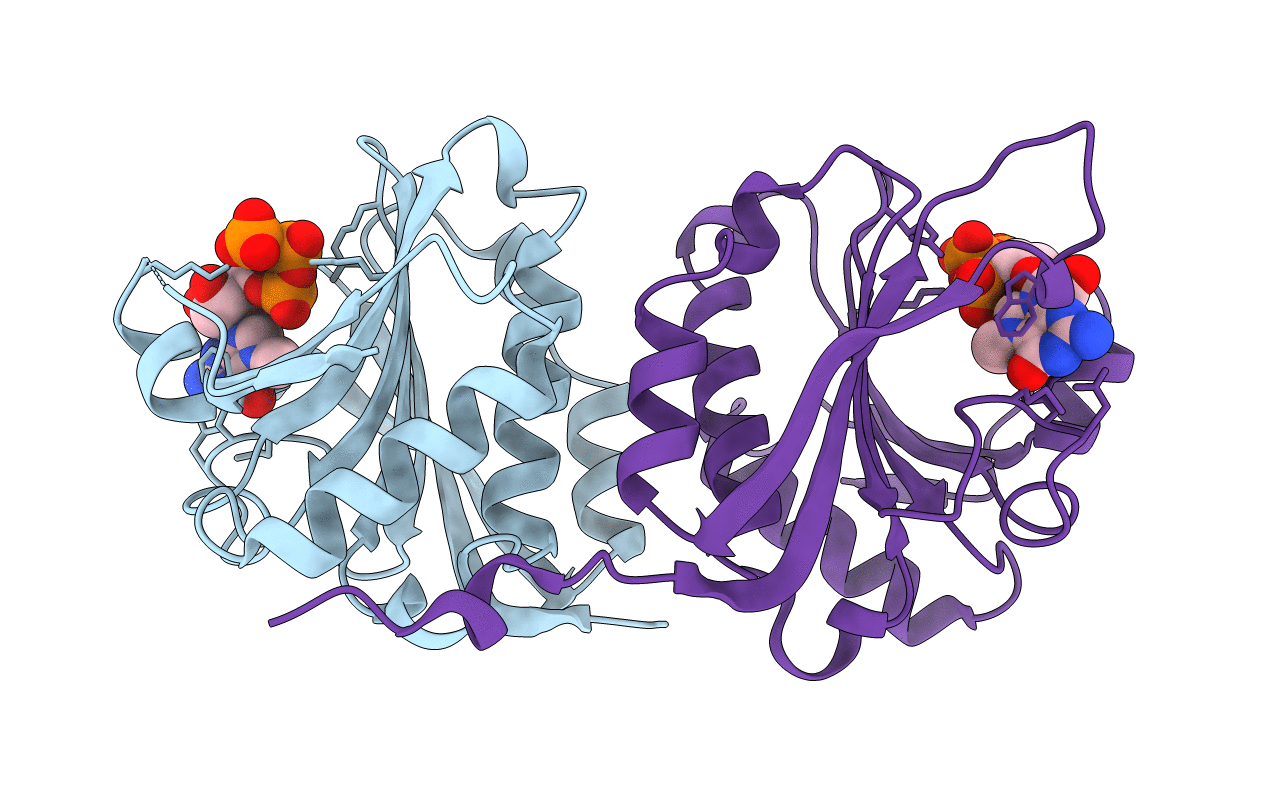
Deposition Date
2002-03-19
Release Date
2002-06-12
Last Version Date
2024-02-14
Entry Detail
PDB ID:
1L8B
Keywords:
Title:
Cocrystal Structure of the Messenger RNA 5' Cap-binding Protein (eIF4E) bound to 7-methylGpppG
Biological Source:
Source Organism:
Mus musculus (Taxon ID: 10090)
Host Organism:
Method Details:
Experimental Method:
Resolution:
1.80 Å
R-Value Free:
0.25
R-Value Work:
0.22
Space Group:
P 21 21 21


